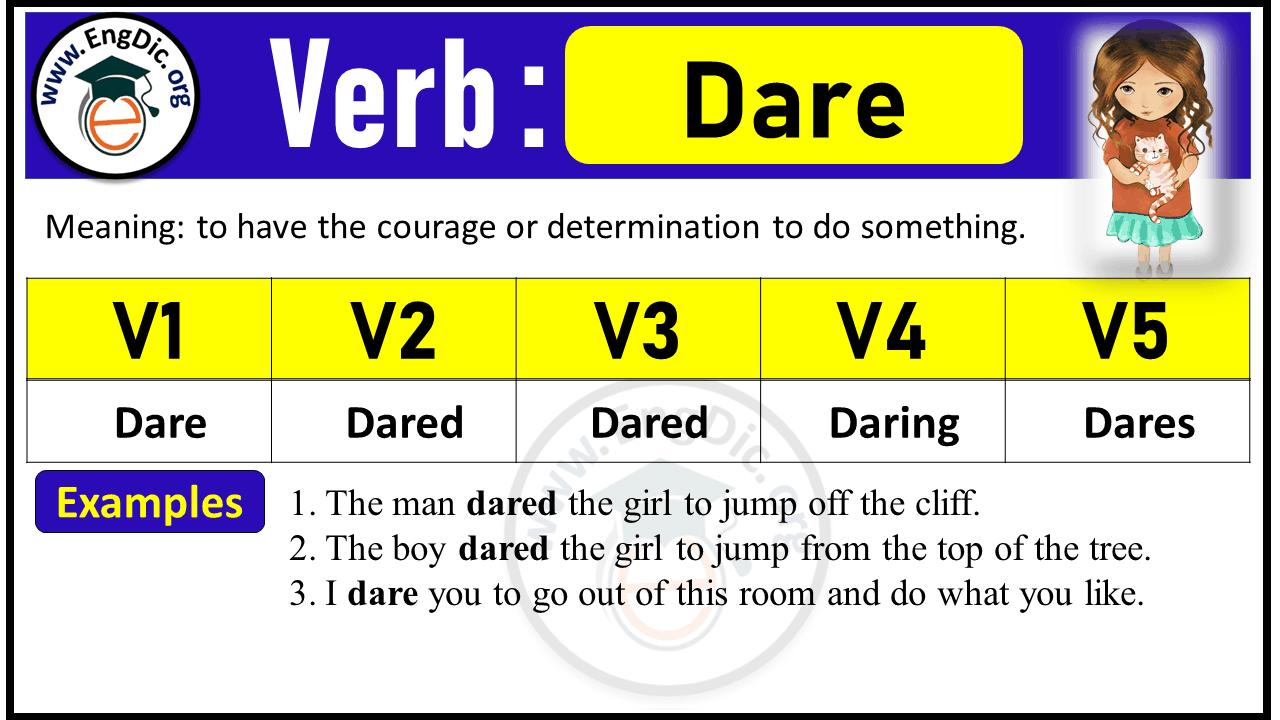Dare Past And Past Participle Form V1 V2 V3 V4 V5 Form of Dare
Are you curious about the word “dare” and how it transforms through its various forms? Understanding the past and past participle forms of verbs is a fundamental part of mastering the English language.
It empowers you to express yourself accurately and confidently. In this blog post, we’ll delve into the different forms of “dare” – from V1 to V5 – and reveal how you can use them effectively in your everyday conversations and writing.
Imagine the confidence boost you’ll gain as you seamlessly incorporate these verb forms into your vocabulary. With each form of “dare,” you’ll unlock new ways to articulate your thoughts and ideas. Whether you’re a student, a professional, or simply someone who loves language, this exploration of “dare” will enhance your skills and enrich your communication. Dive in, and discover how mastering these forms can elevate your language proficiency to new heights.

Credit: www.youtube.com
Evolution Of Dare
Dare means being brave. It is a common word. In its past form, “dared” is used. This shows someone showed courage before. Many use it to express challenges. Kids often play “truth or dare.”
The past participle is also “dared”. It helps in perfect tenses. “I have dared to speak” means I was brave. This form shows completed actions. It’s like saying, “I finished being brave.”
Other forms like V4 and V5 exist too. But, they are less common. Most people use V1, V2, and V3 forms. These forms help express different times and actions.

Credit: www.pinterest.com
Conjugation Of Dare
The base form of “dare” is simply dare. This is the form used in simple sentences. For example, “I dare you to jump.” It shows the action in its most basic form.
The past form of “dare” is dared. This form talks about something that happened before now. For example, “He dared me yesterday.” It tells us the action is completed.
The past participle form is also dared. We use it with has, have, or had. For example, “She has dared him before.” It helps show completed actions.
The present participle form is daring. It shows ongoing actions. For example, “They are daring each other now.” This form adds a sense of action happening.
In the third person singular, it becomes dares. Use it with he, she, or it. For example, “She dares him to race.” It helps describe actions by one person or thing.
Usage In Sentences
Daremeans to have the courage to do something. It is often used when someone is brave. In the sentence, “I dare you to jump,” it shows a challenge. The past tense is dared. Like, “She dared to speak up.” The past participle is also dared. An example is, “He has dared many times.” The present participleis daring. For example, “She is daring him now.” The simple form is dare, and the third-person singular is dares.

Credit: engdic.org
Conclusion
Understanding the forms of “dare” simplifies your English learning journey. Regular practice helps in mastering these verb forms. V1, V2, V3, V4, and V5 forms are crucial in grammar. They guide how you construct sentences correctly. Remember, practice makes perfect with verb forms.
Try using them in sentences daily. This reinforces your learning and boosts confidence. Keep exploring and learning English gradually. It becomes easier with time and effort. With consistent practice, you’ll improve your language skills. Enjoy the learning process and stay curious.
Your efforts will pay off in fluency.






